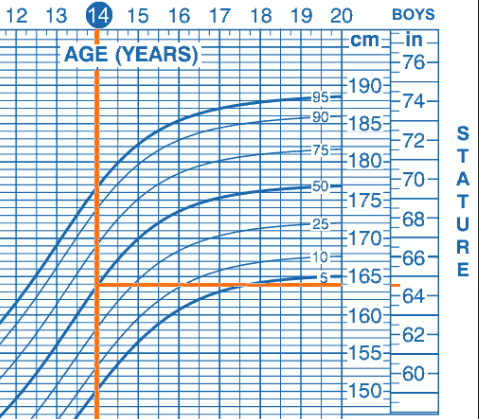The Average Height of 15-Year-Olds: Exploring Growth Patterns and Factors
The height of an individual is a significant aspect of their physical development, and it often raises questions about growth patterns and expectations. In this article, we delve into the topic of the average height of 15-year-olds, examining the factors that influence growth during adolescence and providing valuable insights into this critical phase of human development.

The boy 15 years old
I. Understanding Adolescent Growth
During adolescence, significant physical changes occur, including rapid growth and development. Understanding the dynamics of this phase is crucial to comprehending the average height of 15-year-olds.
A. The Importance of Growth during Adolescence
Adolescence is a critical period for growth, as it sets the stage for adult height and overall physical development. It is characterized by the release of growth hormones, which spur bone growth and contribute to height increase.
B. Factors Influencing Height Variation
Several factors contribute to the variation in height among 15-year-olds. These include genetics, nutrition, hormonal balance, and overall health. Environmental factors, such as access to adequate healthcare and quality nutrition, can also impact growth.
C. Role of Genetics in Determining Height
Genetics play a significant role in determining an individual's height potential. Height is a polygenic trait, meaning it is influenced by multiple genes inherited from both parents. However, while genetics provide a foundation, environmental factors can modulate the expression of these genes.
II. What Constitutes "Average" Height?
Determining what is considered an average height for 15-year-olds involves considering various factors, including global variances and cultural influences.
A. Definition of Average Height
Average height refers to the middle range of heights within a specific population or age group. It is typically determined by calculating the mean height of individuals in a given cohort.
B. Global Variances in Height Averages
Average height varies across different countries and regions due to genetic, nutritional, and socioeconomic factors. Factors such as economic development, dietary patterns, and healthcare access contribute to these variations.
C. Cultural and Ethnic Influences on Height
Cultural and ethnic backgrounds can also influence average height. Genetic variations specific to certain populations can impact growth patterns. For example, some ethnic groups tend to have taller or shorter average heights compared to others.
III. Growth Patterns During Adolescence
Adolescent growth follows distinct patterns, characterized by growth spurts and variations in growth rates among individuals.
A. Growth Spurts: Rapid Increases in Height
During adolescence, growth spurts occur as a result of hormonal changes. These spurts are periods of accelerated growth, often accompanied by physical discomfort and changes in body proportions.
B. Variation in Growth Rates among Individuals
Not all individuals experience growth at the same rate during adolescence. Factors such as genetics, gender, nutrition, and overall health contribute to variations in growth rates. Some individuals may experience growth earlier or later than their peers.
C. Puberty and Its Impact on Growth
Puberty is a significant milestone in adolescent development. Hormonal changes, particularly the release of growth hormones and sex hormones, trigger physical changes, including growth in height. The timing and duration of puberty can vary among individuals, leading to differences in growth rates.
IV. Measuring Average Height
Accurate measurement methods and statistical analysis are crucial when determining the average height of 15-year-olds.
A. Tools and Methods for Height Measurement
Height is typically measured using a stadiometer or height rod, ensuring the individual stands straight and tall without shoes. The measurement is taken from the base of the feet to the top of the head.
B. Statistical Analysis of Height Data
To determine the average height of 15-year-olds, data from a representative sample is collected and analyzed statistically. Mean, median, and percentile rankings are calculated to provide a comprehensive understanding of height distribution.
C. Limitations and Considerations in Measuring Height
Measuring height has certain limitations, such as potential errors due to variations in technique or posture. It is essential to consider these limitations when interpreting height data and understanding average height trends.

Average height of 12-20 year olds for boy
In conclusion, understanding the average height of 15-year-olds requires considering various factors related to adolescent growth. Adolescence is a critical period characterized by rapid physical changes, including height increase. Factors such as genetics, nutrition, hormonal balance, and overall health influence height variation among individuals.
Determining the average height involves assessing the middle range of heights within a specific population or age group. Average height varies globally due to genetic, nutritional, and socioeconomic factors. Additionally, cultural and ethnic backgrounds contribute to height differences, with certain populations having taller or shorter average heights.
Adolescent growth patterns are characterized by growth spurts, during which there are rapid increases in height. However, growth rates can vary among individuals due to factors like genetics, gender, nutrition, and overall health. Puberty, marked by hormonal changes, significantly impacts growth, and the timing and duration of puberty can vary among individuals.